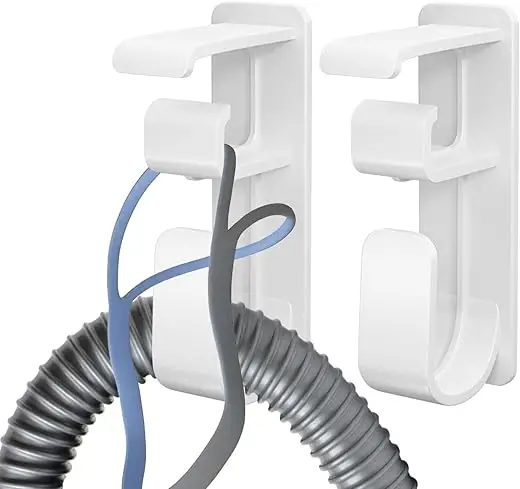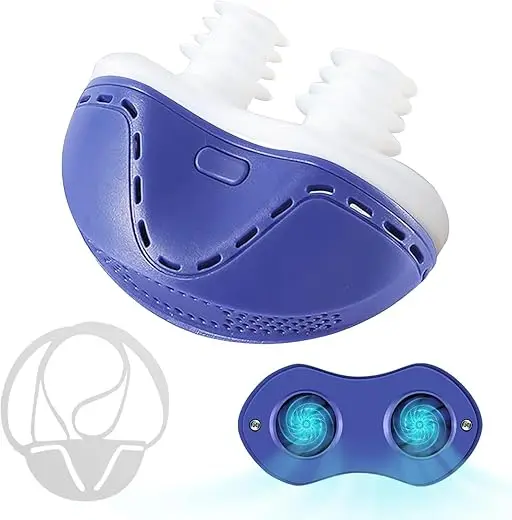The Nasal-Sleep Connection Most Doctors Miss
Chronic sinus problems contribute to or worsen sleep apnea in up to 40% of cases, yet this connection is rarely addressed. Nasal obstruction increases the risk of sleep apnea by 1.8 times, and treating sinus issues can reduce sleep apnea severity by 30-50%. The relationship is bidirectional: sinus problems cause mouth breathing that triggers apnea, while sleep apnea causes inflammation that worsens sinus issues.
That stuffy nose keeping you up at night might be doing more than disrupting your sleep—it could be causing or significantly worsening sleep apnea. This comprehensive guide reveals the complex relationship between sinus problems and sleep apnea, explains why treating one without the other often fails, and provides integrated solutions for both conditions.
How Sinus Problems Cause Sleep Apnea
The Mouth Breathing Mechanism
The Cascade Effect:
- Nasal passages blocked
- Forced mouth breathing begins
- Jaw drops open during sleep
- Tongue falls backward
- Airway narrows or collapses
- Sleep apnea develops
Why Nose Breathing Matters:
- Creates negative pressure keeping airway open
- Produces nitric oxide (airway dilator)
- Warms and humidifies air
- Filters particles
- Maintains proper tongue position
- Prevents airway drying
Increased Negative Pressure
The Physics Problem: When nasal breathing is restricted:
- Greater suction force needed
- Negative pressure increases
- Soft tissues pulled inward
- Airway collapse more likely
- Apnea threshold lowered
Starling Resistor Model: The upper airway acts like a collapsible tube. Nasal obstruction increases the collapse pressure by 3-5 times, making apnea events more frequent and severe.
The Inflammation Connection
Unified Airway Theory:
- Upper and lower airways are connected
- Inflammation spreads throughout
- Nasal inflammation → throat swelling
- Systemic inflammatory response
- Tissue edema worsens obstruction
Inflammatory Markers:
- IL-6 increased 300%
- TNF-alpha elevated
- C-reactive protein rises
- Histamine release
- Cascade effect throughout airway
How Sleep Apnea Worsens Sinus Problems
The Reverse Relationship
Sleep Apnea → Sinus Disease:
- CPAP can cause sinus problems
- Mouth breathing dries sinuses
- Acid reflux reaches sinuses
- Inflammation becomes chronic
- Bacterial colonization increases
GERD and the Sinuses
The Reflux Connection:
- 60% of OSA patients have GERD
- Acid reaches nasopharynx
- Sinus mucosa irritated
- Chronic sinusitis develops
- Polyps may form
The Mechanism:
- Negative pressure pulls acid up
- Sleeping position aids reflux
- Acid damages cilia
- Mucus clearance impaired
- Infection risk increases
Types of Sinus Problems That Affect Sleep Apnea
Structural Issues
Deviated Septum:
- Present in 80% of population
- Increases OSA risk 2x
- Worse on deviation side
- Positional apnea common
- Surgery often helpful
Turbinate Hypertrophy:
- Inferior turbinates enlarged
- Blocks 50-70% of airway
- Worse with allergies
- Cycles throughout night
- Reduction procedures available
Nasal Valve Collapse:
- Dynamic obstruction
- Worse with inspiration
- External strips help
- Internal dilators useful
- Surgery sometimes needed
Inflammatory Conditions
Allergic Rhinitis:
- Affects 30% of adults
- Seasonal or perennial
- Nighttime congestion worse
- Increases OSA severity 40%
- Treatment improves both
Chronic Rhinosinusitis:
- 12+ weeks congestion
- With or without polyps
- Bacterial colonization
- Systemic inflammation
- Medical/surgical treatment
Nasal Polyps:
- Complete obstruction possible
- Associated with asthma
- Aspirin sensitivity triad
- High recurrence rate
- Biological treatments emerging
Infectious Causes
Acute Sinusitis:
- Temporary OSA worsening
- Sleep quality devastated
- Mouth breathing forced
- Recovery important
- May unmask underlying OSA
Chronic Infections:
- Biofilm formation
- Antibiotic resistance
- Continuous inflammation
- Systemic effects
- Aggressive treatment needed
Recognizing the Sinus-Sleep Apnea Connection
Dual Symptoms
Nighttime Red Flags:
- Severe nasal congestion at bedtime
- Switching to mouth breathing
- Snoring changes with congestion
- Positional drainage issues
- Morning sinus pressure
- Dry mouth extreme
Daytime Indicators:
- Chronic sinus pressure
- Postnasal drip
- Fatigue beyond sinus infection
- Mouth breathing habitually
- Facial pain/pressure
- Cognitive fog
Seasonal Patterns
Allergy Season Clues:
- Sleep apnea worse spring/fall
- Snoring increases with pollen
- CPAP pressure needs change
- Daytime symptoms worsen
- Antihistamines partially help
CPAP-Related Sinus Problems
Common Issues:
- Sinus infections increased
- Nasal dryness/bleeding
- Congestion paradox (worse with CPAP)
- Pressure sensations
- Ear problems
Diagnostic Approach
Comprehensive Evaluation
Sleep Assessment:
- Polysomnography essential
- Note nasal breathing percentage
- Positional analysis
- RDI vs AHI comparison
- Flow limitation patterns
Nasal/Sinus Evaluation:
- Endoscopic examination
- CT scan sinuses
- Acoustic rhinometry
- Rhinomanometry
- Allergy testing
Key Measurements
Nasal Resistance:
- Normal: <0.3 Pa/cm³/s
- Mild obstruction: 0.3-0.5
- Moderate: 0.5-0.7
- Severe: >0.7
- Correlates with AHI
Peak Nasal Inspiratory Flow:
- Normal: >120 L/min
- Reduced: 60-120 L/min
- Severe: <60 L/min
- Predicts OSA severity
Integrated Treatment Strategies
Medical Management
Nasal Corticosteroids:
- First-line treatment
- Reduces AHI 20-30%
- Improves CPAP compliance
- Fluticasone, mometasone effective
- 2-4 weeks for full effect
Antihistamines:
- For allergic component
- Non-sedating preferred
- Nasal sprays faster
- Combination therapy best
- Monitor drowsiness
Leukotriene Modifiers:
- Montelukast helpful
- Reduces inflammation
- Helps allergic rhinitis
- May improve OSA
- Well-tolerated
Decongestants:
- Short-term only (3-5 days)
- Rebound congestion risk
- Oral pseudoephedrine
- Topical oxymetazoline
- Not for chronic use
Surgical Options
Septoplasty:
- Straightens deviated septum
- 40-50% OSA improvement
- Better CPAP tolerance
- Combined procedures common
- 6-week recovery
Turbinate Reduction:
- Multiple techniques available
- Radiofrequency ablation
- Laser reduction
- Submucosal resection
- Improves airflow 60%
Functional Endoscopic Sinus Surgery (FESS):
- For chronic sinusitis
- Polyp removal
- Opens drainage pathways
- May cure sinus disease
- OSA improvement variable
Nasal Valve Repair:
- For collapse issues
- Cartilage grafts
- Suspension techniques
- Significant improvement
- Often overlooked
CPAP Optimization for Sinus Issues
Humidity Management:
- Heated humidifier essential
- Settings 4-6 usually optimal
- Heated tubing prevents rainout
- Adjust seasonally
- Monitor comfort
Mask Selection:
- Nasal pillows if tolerated
- Full face if mouth breathing
- Nasal masks intermediate
- Proper fit crucial
- Multiple options trial
Pressure Adjustments:
- May need higher with congestion
- Auto-adjusting beneficial
- Ramp feature helpful
- EPR/Flex reduces pressure
- Regular monitoring
Combination Therapies
The Synergistic Approach:
- Nasal steroids + CPAP
- Allergy treatment + surgery
- Rinses + medications
- Position + nasal treatment
- Comprehensive management
Nasal Rinses:
- Saline irrigation daily
- Before CPAP use
- Removes allergens
- Thins mucus
- Improves medication delivery
Natural and Alternative Treatments
Breathing Exercises
Buteyko Method:
- Trains nasal breathing
- Reduces mouth breathing
- Improves CO2 tolerance
- May reduce apnea events
- Daily practice needed
Pranayama:
- Alternate nostril breathing
- Improves nasal patency
- Reduces inflammation
- Stress reduction
- Ancient but effective
Environmental Controls
Bedroom Optimization:
- HEPA filtration
- Dust mite covers
- Pet-free zone
- Humidity 30-50%
- Temperature cool
- Minimal fabric
Allergen Reduction:
- Daily vacuuming
- Weekly bedding wash
- No carpet ideally
- Window closed high pollen
- Shower before bed
Positional Strategies
For Sinus Drainage:
- Elevate head 30 degrees
- Side sleeping alternating
- Avoid flat back position
- Wedge pillow helpful
- Adjustable bed ideal
Special Populations
Children with Both Conditions
Unique Considerations:
- Adenoid hypertrophy common
- Allergies prevalent
- Growth affected
- Behavior problems
- Early intervention critical
Treatment Approach:
- Adenotonsillectomy often first
- Aggressive allergy management
- Nasal steroids safe
- Growth monitoring
- Development tracking
Athletes
Performance Impact:
- Nasal breathing crucial
- Exercise-induced congestion
- Recovery impaired
- Altitude training affected
- Career implications
Management:
- Pre-exercise nasal steroids
- Breathing strips during sport
- Optimal sleep critical
- Avoid overtraining
- Monitor both conditions
Monitoring Progress
Tracking Tools
Subjective Measures:
- NOSE scale (nasal obstruction)
- Epworth Sleepiness Scale
- Sleep quality rating
- Sinus symptom diary
- CPAP data download
Objective Assessments:
- Peak nasal flow
- Home sleep testing
- Endoscopic examination
- Imaging as needed
- Inflammatory markers
Success Indicators
Improvement Signs:
- Nasal breathing restored
- Snoring reduced
- AHI decreased
- CPAP pressure lower
- Energy improved
- Sinus infections fewer
Common Mistakes to Avoid
Treatment Errors
Single Focus:
- Treating only sinuses
- Ignoring nasal in OSA
- CPAP without sinus care
- Surgery without medical trial
- Inadequate follow-up
Medication Mistakes:
- Decongestant dependence
- Sedating antihistamines
- Inadequate steroid trial
- Wrong delivery method
- Poor timing
Success Stories
Mark, 45
“Struggled with CPAP for years, constant sinus infections. Finally saw ENT—severe deviated septum and polyps. Surgery plus nasal steroids: CPAP pressure dropped from 15 to 9, no infections in 2 years.”
Jennifer, 38
“Allergist found severe dust mite allergy. Bedroom changes, immunotherapy, nasal rinses. Sleep apnea went from severe to mild, off CPAP now.”
David, 52
“Chronic sinusitis made CPAP unbearable. FESS surgery, heated humidifier, saline rinses. Now use CPAP successfully, energy returned, sinuses clear.”
Creating Your Integrated Treatment Plan
Initial Assessment
Week 1:
- Document sinus symptoms
- Track nasal breathing
- Note congestion patterns
- Monitor sleep quality
- Record CPAP issues
Medical Evaluation
Week 2-3:
- See sleep specialist
- ENT consultation
- Allergy testing
- Imaging if needed
- Comprehensive plan
Treatment Implementation
Month 1-3:
- Start medical therapy
- Optimize CPAP settings
- Environmental controls
- Monitor response
- Adjust as needed
Long-term Management
Ongoing:
- Regular monitoring
- Seasonal adjustments
- Maintenance therapy
- Annual evaluations
- Integrated care
The Bottom Line
The connection between sinus problems and sleep apnea is real, significant, and treatable. Addressing one without the other often leads to treatment failure and continued suffering. The key is recognizing the relationship and treating both conditions simultaneously.
Whether your sinus problems caused your sleep apnea or your sleep apnea worsened your sinus issues doesn’t matter as much as addressing both. Integrated treatment can dramatically improve both conditions, often with results that surprise both patients and doctors.
Don’t accept partial treatment. If you have both sinus problems and sleep apnea, demand comprehensive care that addresses the whole airway, not just parts of it. Your breathing, your sleep, and your quality of life depend on it.
Breathe better, sleep better, live better. If sinus problems and sleep apnea are affecting your life, seek integrated treatment from specialists who understand the connection.



